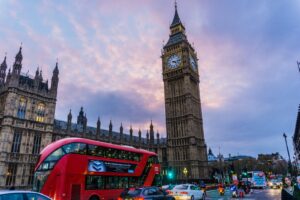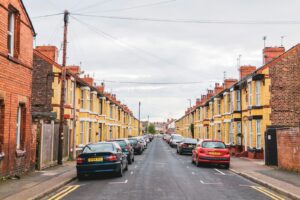The ‘emerald green age’ of cities
![]() How can we create ‘the emerald green age’ of cities in Scotland? What can Scottish towns and cities learn from pioneers like Freiburg in Germany?
How can we create ‘the emerald green age’ of cities in Scotland? What can Scottish towns and cities learn from pioneers like Freiburg in Germany?
Twenty regeneration practitioners from all over Scotland, including entrepreneurs, local government officials, academics and young professionals tackled these and other questions in the first ‘Regeneration for Scotland’s future‘ webinar.
The webinars are an experimental series of online discussions funded through the Scottish Government’s Learning Networks Challenge Fund and organised by Shared Intelligence.
Andrea Philipp, a consultant at Aiforia, based in Freiburg Germany, started our discussion.
Freiburg’s journey to urban sustainability began back in the 1970s with the proposal to construct a nuclear power station in the vicinity of Freiburg. The proposal united people across Freiburg to develop ideas for a nuclear-free Freiburg.
The Chernobyl disaster in the 1980s further strengthened the municipality’s desire to move towards a future energy supply based on renewables. The city now has set itself a target of reducing CO2 by 40% by the year 2030 which is enshrined in the climate protection plan.
Freiburg’s attempt to create a model eco-district has made the city famous. Practitioners from across the world flock to Vauban – a sustainable model district in the city – to learn more about how to promote and embed urban sustainability. This has contributed to a growing industry in green tourism.
Vauban was a brownfield site which the city council’s used to create a ‘different type of neighbourhood’. A key theme of its development was to reduce the use of the private car by strictly limited private car parking space and promoting walking, cycling and a cross-town tram system.
Car ownership in Vauban is low at 222 cars per 1000 residents. The absence of cars in the neighbourhood has had positive impacts in terms of more green space, less noise pollution and a safer playing environment for children.
All houses built in this district must comply with special low energy housing standards which require them to waste less than 65kWh of energy a year per square metre for heating (compared with the national German target of 100KWh per year).
This has been achieved through the use of passive housing design (reducing heat consumption to less than 15kWh/m²a) and some areas of Vauban use pioneering technology from the work of Rolf Disch who has developed the surplus energy house in the so called Schlierberg Solar Settlement in Vauban. This emphasis on solar renewables is not confined to residential buildings, the area also includes the ‘solar ship’ office building which also generates excess solar energy.
Andrea also described the work being taken forward in Weingarten – another district of Freiburg and home to more than 5000 inhabitants – to retrofit a 1960s complex of municipal housing in an effort to reduce energy use by 30%. In this area, the first energy passive skyscraper in Europe has been developed.
Key themes from Freiburg:
- The state has been crucial in making change happen – often in its role as a landowner and lead developer
- Local activism has been a crucial force for change – at first in opposition to nuclear power and over time in making environmental sustainability a political priority
- Maximising natural assets and resources – The emphasis on passive housing and reducing car use illustrates how it is possible to make the most of the natural assets that exist in an area and how this can actually help create cost savings in terms of energy efficiency and making more land available for housing
Questions for practitioners in Scotland:
- How do we mobilise entrepreneurs and private businesses in partnership with the state?
- How can we make similar progress at a time of pressure on public spending?
- What’s the balance of social / private housing ownership in Freiburg – what does that mean for change in Scotland?
- How does the financing of low energy / passive housing work in a depressed housing market?
- What’s the potential of green tourism in Scotland?
- Is it feasible to adopt similar measures to limit private car use and parking in Scotland?
- Is it possible to create a version of Freiburg’s achievements on non-brownfield sites?
Want to contribute to the debate?
Get in touch with John P. Houghton or Sarah Longlands
For more info on upcoming webinars click here.
















A comment of Freiberg:
“It’s a brave utopian vision – but, oddly, Rieselfeld is the last place I would want to live. Its housing blocks, built to a uniform height (usually four storeys), are reminiscent of the Eastern Bloc. Because the properties are all the same age, the place lacks character and charm. On the walk to my hotel, I pass an area of pitted waste ground reserved for the last phase in Rieselfeld’s development, awaiting the excavators and cranes that accompany any such work in progress. It might be ‘the gateway to the Black Forest’ (as one resident put it), but the quarter lacks some of the facilities you might expect of a small provincial town. At Cafe Medico, one of less than a handful of restaurants in Rieselfeld, two of the four main courses were off and the ‘vegetarian curry’ was an abomination: rice with a tin of apricots emptied over it, topped with a heap of overcooked Brussels sprouts. If that is quality of life, I can leave it.”
http://www.theguardian.com/environment/2008/mar/23/freiburg.germany.greenest.city
This is the wonder of ‘old world urbanism’ – charmless boxes to live in, neighbours who shun you for buying cheap food and €18,000 a year just to park your car. Indeed to avoid this charge you have to sign a declaration that you will never own a car – something I’m pretty sure plenty of residents ignore.
If this is a better world, it is a better world I don’t want. A dysfunctional, bossy world tossed between trendy urban obsession with ‘sustainability’ and the pretence that creating swanky inner city neighbourhoods can resolve the fact that there aren’t any jobs. Ignoring the simple fact that this economic renewal requires transport links – and that mean roads, cars, trucks and airports as well as trams and bicycle lanes.
There are certainly things to learn from these places – the conformist, Stepford sort of places that the Greens would have us believe is the future of urban living. But the lesson is as much a warning about how authoritarian and controlling the ‘sustainability’ agenda has become as it is about whether these places work any better than Milton Keynes, Atlanta or Calgary.